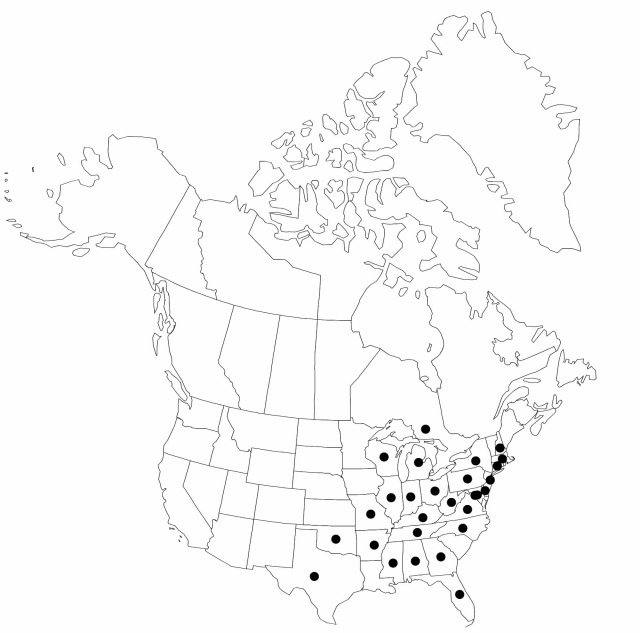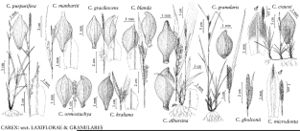Difference between revisions of "Carex gracilescens"
Syn. Pl. Glumac. 2: 226. 1855.
FNA>Volume Importer |
FNA>Volume Importer |
||
| Line 50: | Line 50: | ||
|publication year=1855 | |publication year=1855 | ||
|special status= | |special status= | ||
| − | |source xml=https://jpend@bitbucket.org/aafc-mbb/fna-data-curation.git/src/ | + | |source xml=https://jpend@bitbucket.org/aafc-mbb/fna-data-curation.git/src/8f726806613d60c220dc4493de13607dd3150896/coarse_grained_fna_xml/V23/V23_804.xml |
|genus=Carex | |genus=Carex | ||
|section=Carex sect. Laxiflorae | |section=Carex sect. Laxiflorae | ||
Revision as of 16:11, 18 September 2019
Culms densely tufted, ascending, lax or, occasionally, decumbent, 13–78 cm × 0.8–1 mm. Leaves: basal sheaths purple or purple tinged; sheaths 2–42 mm; blades ascending or lax, erect, green or yellow-green, midrib developed adaxially, 2 lateral veins abaxially, 19–38 cm × 1–5 mm, blades of overwintering leaves smooth. Inflorescences: peduncles proximal pistillate spikes to 11 cm, distal spike sessile; staminate spike 0.5–10.6 cm. Bracts 0.5–11.2 cm × 0.5–4 mm, angles of bract sheath denticulate; bract blade of distal lateral spikes linear, narrower than spikes, not concealing them; widest bract blade of distalmost lateral spike 0.5–3.4 mm wide. Spikes (3–)4(–5) per culm; lateral spikes 5–27 × 3–4 mm; internode between proximal scales in proximal spike 1.1–3.2(–4.8) mm; terminal spike linear, 11–21 × 1–2.2 mm. Pistillate scales 2.8–3 × 1–1.2 mm, apex acute to aristate, awn to 1 mm. Staminate scales 3.5–4 × 1.2–1.5 mm, margins hyaline, purple-brown or brownish purple tinged, apex acute. Anthers 2.6–3 mm. Perigynia 4–12 per spike, closely overlapping, aggregated, ascending, conspicuously (22–)25–32-veined, elliptic-obovate, 2.8–3 × 1.5–1.8 mm, 1.8–2.7 times long as wide; beak abruptly bent, 0.2–0.8 mm. Achenes obovoid, 2.6–2.8 × 1.3–1.6 mm. 2n = 33, 38, 40.
Phenology: Fruiting spring.
Habitat: Moist to dry deciduous or mixed deciduous-evergreen forests or woodland edges in partial shade, frequently on limestone or chalk, on clay or marl soils, stream bottoms or on steep slopes
Elevation: 0–600 m
Distribution

Ont., Ala., Ark., Conn., Del., D.C., Fla., Ga., Ill., Ind., Ky., Md., Mass., Mich., Miss., Mo., N.H., N.J., N.Y., N.C., Ohio, Okla., Pa., Tenn., Tex., Va., W.Va., Wis.
Discussion
Selected References
None.
